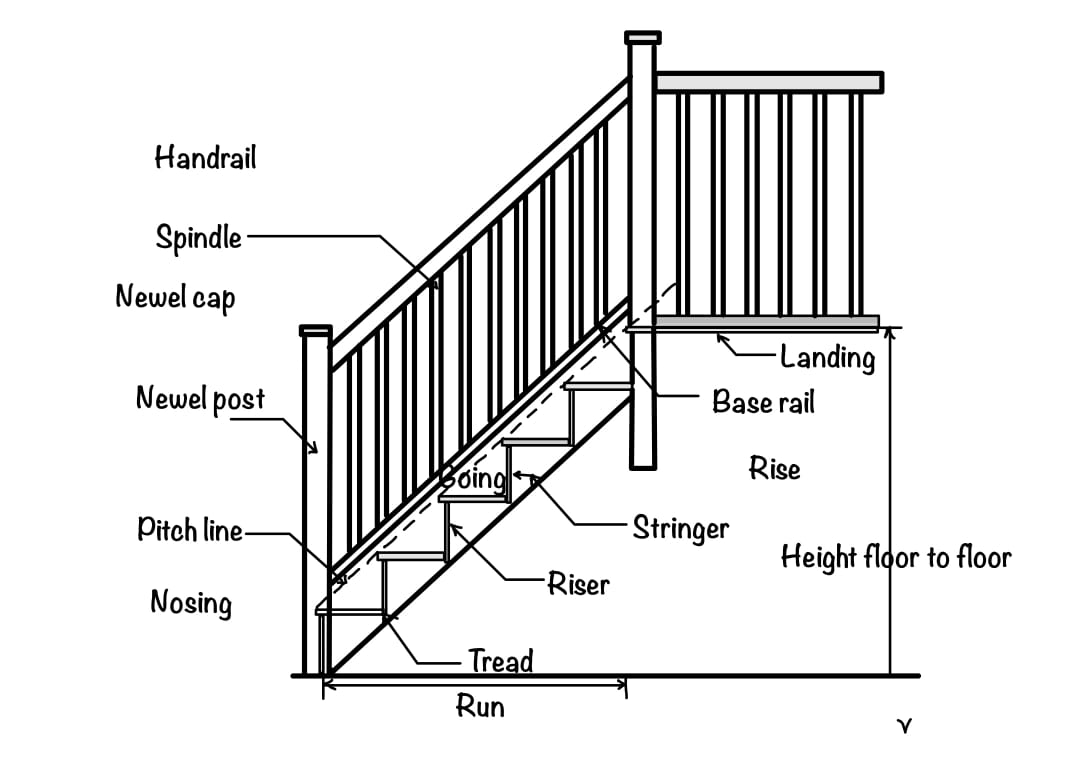A staircase serves as more than just a functional component within a building; it is an architectural feature that harmonizes design and functionality. At its core, a staircase is a series of steps strategically arranged to facilitate movement and access between different levels of a structure. It acts as a vital connection, enabling seamless transitions and ensuring the smooth flow of people within a space. However, its significance goes beyond its utilitarian purpose.
The design of a staircase holds the potential to transform a mundane element into a captivating work of art, enhancing the overall aesthetic appeal of a structure. The importance of staircase design becomes apparent when considering its role in defining the ambiance and style of a space. Whether it is a grand sweeping staircase that exudes elegance and sophistication, or a minimalist design that complements a contemporary setting, the choice of materials, shapes, and finishes significantly influences the visual experience of a structure.

A well-designed staircase has the ability to evoke emotions, create focal points, and become an integral part of the architectural narrative. It serves as a reflection of the overall design concept, enhancing the character and personality of the space it occupies.
Functions of staircases
Beyond its visual appeal, a well-designed staircase fulfills crucial functions that prioritize safety, ease of use, and efficient circulation. By considering factors such as dimensions, riser height, tread depth, handrail placement, and overall design, staircases are crafted to enhance user comfort and accessibility.
Let us explore the key functions of a staircase in more detail:
- Vertical Circulation: It allows occupants to ascend or descend floors, eliminating the need for relying solely on elevators or escalators.
- Safety: Each element, from the height and depth of the steps to the presence of handrails, must adhere to established building codes and regulations. A well-designed staircase minimizes the risk of accidents, providing stability and support for users as they traverse between levels.
- Accessibility: Staircase design should prioritize accessibility, accommodating individuals with varying mobility levels. Incorporating elements like ramps or elevators alongside stairs can further enhance accessibility within a building.
- User Comfort: Aesthetics aside, a comfortable staircase enhances the overall experience for users. Factors such as the inclination of the stairs, the width of the treads, and the placement of handrails contribute to user comfort. Ergonomic principles are considered to minimize strain and fatigue during stair ascent or descent, allowing for smooth and effortless movement.
- Architectural Integration: Staircases serve as architectural features that can complement and enhance the design of a space. They contribute to the overall aesthetic appeal, adding visual interest and becoming focal points within the building. The choice of materials, finishes, and design styles can align the staircase with the overall design concept, creating a harmonious and cohesive environment.
Design of Staircase as per IS 456: 2000
Begin by understanding the purpose of the staircase and the specific requirements of the space. Consider factors such as the expected traffic flow, the intended architectural style, and any special needs or regulations that need to be addressed. Data required: Staircase room size, floor to floor height (H), Live load.
Functional details of staircase
The rise (R) and tread (T) of stairs are determined based on the type of structure in which the staircase is being installed. These dimensions play a crucial role in ensuring user safety, comfort, and ease of movement.
- Number of risers = Floor to floor height / Rise = H/R
- Number of risers for any flight <= 12
- Based on these requirements decide the number of risers per flight.
- Number of steps per flight = Number of risers – 1
- Calculate, Going = Number of steps per flight * Tread
- Depending on the size of staircase room fix up the size of landing.
- Compute the span L = Horizontal distance between the supports.
Trial Depth
The waist slab is the vertical staircase component that supports the steps and connects them to the landing or floor slab. In general, the thickness of a waist slab is typically determined based on structural calculations performed by a structural engineer or designer.
Assume Trial Depth = Span/25 to Span/20.
Calculation of Loads
Consider the various loads due to
- Self weight: Self load refers to the weight of the structure itself, including the weight of the material used in construction and any fixtures or furnishings $$ w = \text{Self weight of slab} + \text{weight of steps} + \text{Floor finish} \\ w = 25 D sec \phi + 25 \times \frac{R}{2} + FF$$, where $$sec \phi = \frac{(T^2 +R^2)^{0.5}}{T}$$
- Dead Load: To refer to the permanent and stationary weight of a structure and its components.
- Live load: The temporary or movable loads that a structure or building is prone to during its use or occupancy.
- Total load : Calculate the total load and factored load (1.5 * Total load)
The remaining design steps are the same as those for one way slab, Which is already explained in this post.
Conclusions
Designing a staircase involves careful consideration of various factors to ensure both functionality and aesthetic appeal. By following a systematic approach, architects and designers can create staircases that provide safe and efficient vertical circulation within a structure.
Let’s delve into the key points discussed in this post:
- Determining Purpose and Requirements: The first step in designing a staircase is understanding its purpose and the specific requirements of the space. Consider factors such as expected traffic flow, architectural style, and any special needs or regulations that need to be addressed.
- Selecting Staircase Type: Choose the type of staircase that best suits the space and meets the design requirements. Options include straight stairs, L-shaped stairs, U-shaped stairs, spiral stairs, or custom designs. Consider the advantages and limitations of each type and select the most appropriate configuration.
- Incorporating Safety Features: Integrate essential safety features into the staircase design. Install sturdy handrails on both sides, ensure proper lighting along the stairs, and incorporate slip-resistant materials for the treads to prevent accidents and enhance user safety.
- Use of IS 456: It is crucial in staircase design as it provides comprehensive guidelines and specifications for ensuring structural integrity, safety, and compliance with industry standards.

Android Apps
⭐️ ⭐️ ⭐️ ⭐️ ⭐️ 1000+ | 400,000 + Downloads (Cumulative)
At eigenplus, our goal is to teach civil engineering students about structural analysis and design starting from the fundamental principles. We do this with the help of interactive android applications and accompanying web articles and videos.
Our apps have helped more than 400 thousand students across the world to understand and learn the concepts of structural engineering. Check out our apps on the google play store.
This article was crafted by a group of experts at eigenplus to ensure it adheres to our strict quality standards. The individuals who contributed to this article are:
Author


